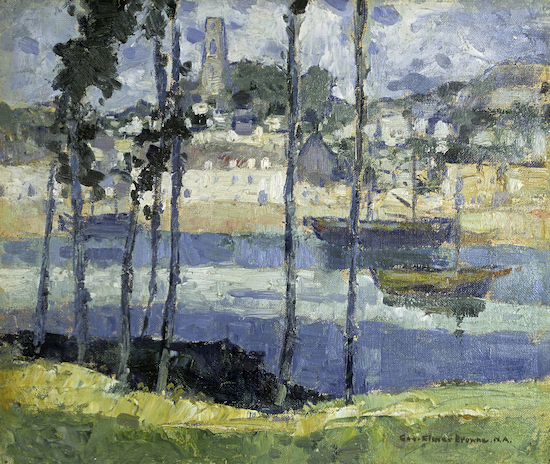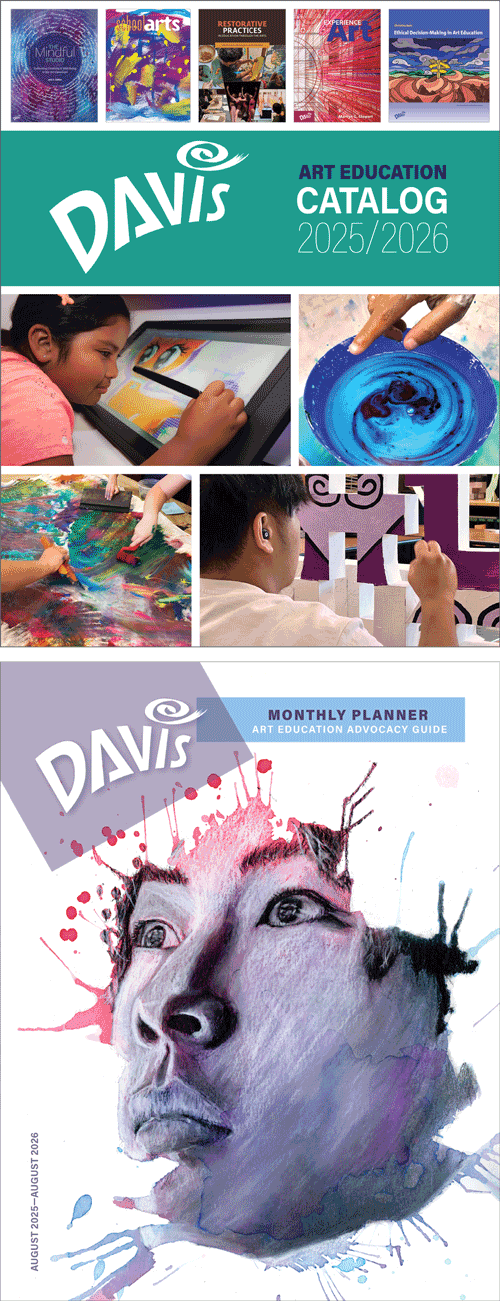Artist Birthday: George Elmer Browne
George Elmer Browne was an American painter, one of the many who, in the late 1800s, studied painting in Paris at the height of the Impressionist period. His West End School of Art in Provincetown, Massachusetts, was one of many art colonies that, during the first 25 years of the 1900s, specialized in American Impressionism.
Artist birthday for 6 May: George Elmer Browne (1871–1946, United States)
George Elmer Browne was one of the many American artists at the beginning of the 1900s who studied in France and brought Impressionism back with him.
 |
| George Elmer Browne, Harbor Scene, ca. 1916–1920. Oil on canvas board, 36.8 x 43 cm. Private Collection. © 2025 Davis Art Images. (8S-29823) |
Browne's body of work is characterized by a number of different styles that the artist used. They range from traditional realism, to Impressionist realism, to flat out Impression in works like this Harbor Scene. One of the attractions for Browne of Impressionism was the freedom of brush work and quick execution, especially important when teaching students to paint outdoors like the Impressionists. This work displays Browne's handling of the broken color technique of Impressionist painting at his finest. Harbor Scene, probably Browne's beloved Gloucester, presents depth built in horizontal layers of luminous Impressionist palette. The vertical contrast of foreground trees to the dominant horizontality of the painted layers may reflect the influence of Japanese landscape woodcut prints by artists like Hiroshige (1797–1858) or Hokusai (1760–1849).
During the last half of the 1800s, painting in America was dominated by the Society of American Artists in New York City and the National Academy of Design. These institutions ruled the art world, and their juries decided who did and did not show at annual exhibitions, just as European academies did. Impressionism was artistically and aesthetically controversial in the 1890s. French impressionist works had been introduced in exhibits in New York in the 1880s, and not well-received by critics. By the time of the 1893 Chicago's Columbian Exposition, many American painters were working in impressionist styles, although painting at the time was still dominated by the brown-yellow landscapes of the academic artists.
Frederick Childe Hassam (1859–1935) spent some time in France during the 1880s. There he learned Impressionistic brushwork and brighter palette, and brought back knowledge of those techniques to America. While he was a member of the Society of American Artists, he naturally tended to work with those in the Society who painted in more progressive, Impressionistic styles, such as Robert Reid (1862–199), Frank Benson (1862–1951), Edmund Tarbell (1862–1928), Willard Metcalf (1858–1925), Joseph De Camp (1858–1923), Julian Alden Weir (1852–1919), Thomas Wilmer Dewing (1851–1938) and Edward Simmons (1852–1931) who had all been in France.
The conservatives who controlled the Society, however, prevented these artists from mounting exhibits which featured Impressionist paintings. Many critics considered Impressionism a fad which lacked the grandiose objectives of "true art." Such an attitude led these ten artists to resign from the Society and form their own "academy" of Impressionism. Their first exhibit together was March 30, 1898 at the Durand-Ruel Gallery in New York under the dubbing "The Ten." That gallery had first introduced French Impressionist works to America and was known to favor avant-garde artists. Winslow Homer (1836–1910) and Abbot Henderson Thayer (1849–1921) were invited to join but declined. The group was the first in America to organize outside of the official art academies.
Browne was born in Gloucester, Massachusetts. He attended school in Salem, where his artistic ability was recognized at a young age He studied at the Museum of Fine Arts School and Cowles School of Art, both in Boston. At the time, Boston was becoming known as a center of American Impressionism. At the MFA Browne studied under Impressionists Benson and Tarbell, while at Cowles he studied under De Camp. In the 1890s, Browne studied in Paris, and incorporated aspects of Impressionism into his work. Returning to New York, he established Browne Art Class, emphasizing painting outdoors and bringing a work to completion in one sitting. He taught the same curriculum when he established the West End Art Studio in Provincetown, MA in 1916, at the time the largest art colony in the United States. He taught in Provincetown every summer up until his death.

Comments